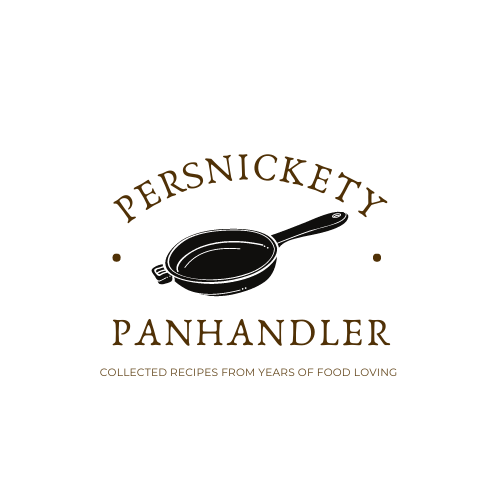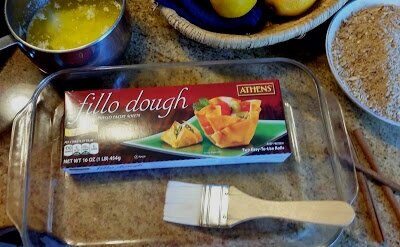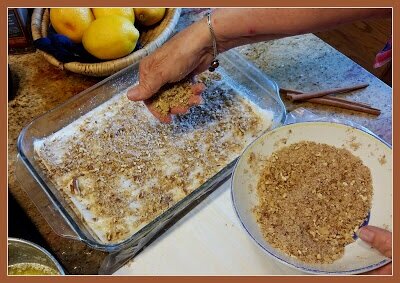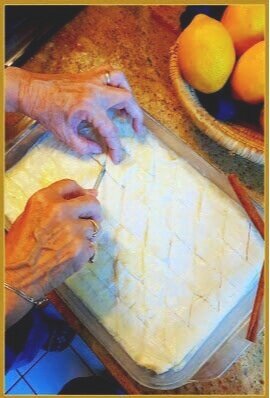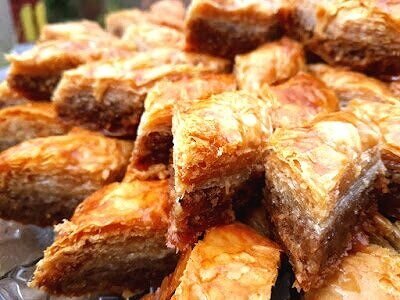Baklawa
Treasures of golden, buttery, crispy perfection - diamonds of phyllo beauty!
Yes, you read it right -Baklawa- with a "w". I was trained in creating this most succulent, layered treasure by a Lebanese friend and since Arabic has no "V", "W" is substituted. Much the same is true with the "P" - does not exist in Arabic, so "B" is used, which makes Pepsi become Bebsi. In loyalty to one of the best Arab cooks I ever knew, I somewhat pretentiously insist on the Arabic pronunciation. But regardless, eating and enjoying it are the same, whatever it might be called.
I have been away from posting for almost two years, busy exploring other experiences in my life but I haven't stopped cooking, and often cooking includes baklawa, which then requires teaching others to make it. This is one dessert whose preparation terrifies people. And when first made in the rustic, dusty kitchens of the Middle East, it must have terrified most anyone, because the paper-thin dough would be rolled out on a large table, only the expert achieving a uniform thickness.
With the introduction of modern technology that laborious task has long been a labor of the past - in fact I never met an Arab cook who makes the dough by hand. We all know a good thing when we see it - and the frozen packages of phyllo dough in the market are good enough!
When I first made baklawa in the states years ago, phyllo dough was hard to find, and when I did find it, it had sat in a freezer for a long time, and the sheets were always stuck together and difficult to work with. Being a more common ingredient now, the sheets generally pull off neatly from the sheet below it, but not always. Regardless, it is a good idea to only work with phyllo when you have plenty of time, get everything you will need together, sit down and take a relaxing breath and whistle a happy tune as you gingerly pull the sheets off from one another. But be sure the dough is completely thawed or that will not happen.
When you bring it home frozen from the store, place it in the refrigerator if you will be working with it in the next few days, If it will be longer than a week freeze it. If you need the dessert that evening, open the package, take one encased roll at a time and microwave on full power for 1 minute. Let it sit for 10 minutes then zap it again for another minute (not recommended but is usually successful when in a hurry.) And if the dough sticks and tears, take another deep breath and be assured that only the top layer has to look perfect - everything underneath it can be patched and folded and holey.
When teaching cooking classes, this is the one dish that is most often requested and though I now have its preparation down to 15 minutes tops, I still call it a sitting job - there just aren't enough of those, so enjoy the sit for those jobs that you can. One student asked if they could use Pam instead of butter between each layer of dough. I told her sure, but that I wouldn't want to eat it. If you're going to bother with it in the first place, use ingredients that will make it taste as delicious as it was meant to be. Butter is a must. I prefer salted butter for the salty contrast that plays against the very sweet notes. Butter will create the distinct layers so that when you bite into a piece you hear a hundred different pops of crunchy buttery, sweetness in your mouth.
As suggested earlier, what's in a name -baklava or baklawa- "a rose by any other name would smell as sweet"; so let's talk about rosewater....then let's talk about ghee. Rosewater is generally added to the syrup in the Middle East but is an acquired taste. I would rather dab rose water on my wrists than eat it, so I don't use it. And then ghee (clarified butter) is called for in many authentic recipes which I think is totally uncalled for. Ghee has a distinct flavor that those in my family refer to as a little "goaty". That's difficult to explain, but suffice it to say, it is not pleasant.
With all this being said, baklawa is not difficult to make. Perhaps a bit tedious but once adoring fans have eagerly consumed it, you will probably feel it was worth it. My children gather round like panting wolves ready to pounce on its prey as soon as it is ready - or even before. My oldest can eat half a pan but is ill the rest of the day after doing so but seems to lack the control to stop. Baklawa is a demanding taskmaster - sitting there glistening with all its buttery layers and crunchy nuts teased with cinnamon; expecting us to master our appetites and yet punishing us when we give in to its temptation and don't.
Pay attention to the specific notes and recommendations below. I have made it so often I know a lot of tricks. I have even been told by Arabs themselves that mine is as good as their mothers. (But don't tell their mothers.)
Baklawa
1 lb. pecans, walnuts or shelled pistachios, finely chopped
(or use a combo of all 3 nuts)
1/3 cup sugar
2 tab. cinnamon
½ tsp. ground cloves
1 package phyllo pastry, thawed
1 ½ cups melted butter
SYRUP:
2 1/2 cups sugar
1 2/3 cups water
1 slice lemon
1 stick cinnamon
-Combine nuts, 1/3 cup sugar, cinnamon and grounc cloves in food processor. Finely chop and set aside.
-Butter bottom of 9 x 13 inch glass baking dish. Unwrap 1 roll of phyllo dough and lay out flat on work surface. (Dough will dry out quickly. If this is your first time working with phyllo you may want to place a sheet of plastic wrap over the dough while you are working with the sheets in the pan. Once you are faster, this won't be necessary.)
-Place 2 sheets of phyllo in bottom of dish. With pastry brush, brush completely with melted butter. Place 2 more sheets and brush with butter. Continue layering and brushing 2 sheets at a time until you have used 12 sheets of phyllo. (if the dough sheets don't fit your pan exactly, you may fold the dough under on one end, and alternate the fold to the other end with the next layer.)
-Sprinkle phyllo evenly with 1/3 of nut mixture. Place 2 sheets phyllo over nut mixture and brush with butter. Repeat filling and phyllo layers two more times.
-Continue layering and brushing 2 sheets of phyllo at a time until you have used all the sheets in the package - both rolls (approximately 24 more total sheets of pastry.)
-Tuck in edges of phyllo and cut into diamond shapes approximately 2 inches long by 1 1/2 inches wide, with a sharp serrated knife. (Do this by cutting vertically along the long edge making 5 even cuts. Then at a 45 degree angle, start at one corner and cut to the opposite side. Make your next 45 degree angle cut about 1 1/2 inches from your first one. Wet fingers to keep phyllo from sticking to them or place the pan in the fridge for 30 minutes before cutting. Pour remaining butter over baklawa. Sprinkle with water to keep top layers from curling during baking.
-Bake in 350 degree oven for about 45 minutes. If top becomes too brown, cover loosely with foil.
-Meantime, prepare syrup. Combine water, sugar and cinnamon stick in medium saucepan. Stir and bring to boil over medium high heat. Let boil for 10 minutes on medium low heat. Do not stir once mixture begins to boil or it will become cloudy. (Cover the pan with a lid for the last 3 minutes to melt any sugar crystals that may have formed on the sides of the pan.) Squeeze the lemon quarter's juice into the syrup and add lemon to the hot liquid. Let mixture cool to room temperature.
-Pour cooled syrup over warm baklava. (The pastry appears to be floating in the syrup at this point - you will be amazed to see how it soaks it all up. Let sit for several hours or overnight at room temperature. If you don't let it sit long enough, some of the syrup may not be absorbed but can still be served - just a little soupier than the ideal.) Re-cut pieces again with sharp knife to make sure you have cut through all the layers, then serve.
Ingredients and equipment to make baklawa.
Lay two sheets of phyllo at a time in the pan and brush with melted butter.
Sprinkle nut/cinnamon mixture over 12th, 14th and 16th sheets of phyllo.
Score the completed baklawa into diamond shapes with a sharp knife.
Bake until phyllo layers begin to separate and are golden brown, top & bottom.
Baklawa, just like “Um” (Mom) used to make!
PERSNICKETY NOTES:
**Phyllo dough is sold in most grocery stores in the frozen foods department most often near the frozen berries and frozen pie crusts.
**This recipe uses half the melted butter called for in traditional recipes by brushing every other sheet with butter. All sheets touch butter on one side this way, but the crunchiness is not affected and you feel as if you have saved yourself half the calories - a win-win!
**To store baklawa, simply cover very loosely with foil at room temperature. Do not seal in airtight container or bag and do not store in refrigerator as this will make the layers of dough soggy - what a shame to lose that marvelous crunch! The best way to store it is in an open pan in a cupboard where flies or overeaters can't get to it.
**You can freeze baklawa once it is assembled and cut but before baking. Remove from freezer about 1 hour before baking and continue recipe as described above. (If frozen after baking, you loose all the crunch.)
**I like to bake mine in a glass 9 X 13 inch pan. That way I can lift it up and see through the bottom to make sure it is golden before removing from the oven.

